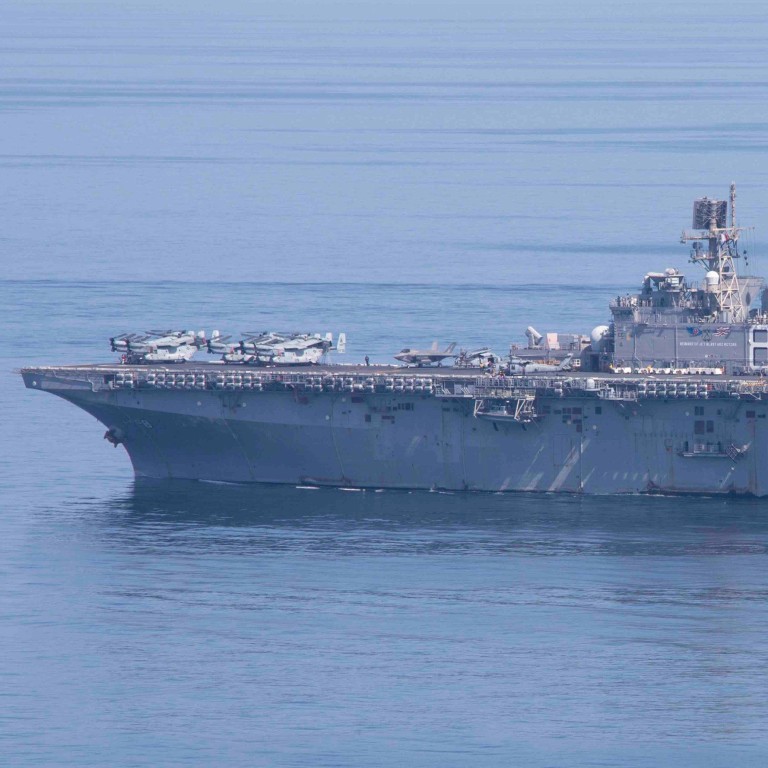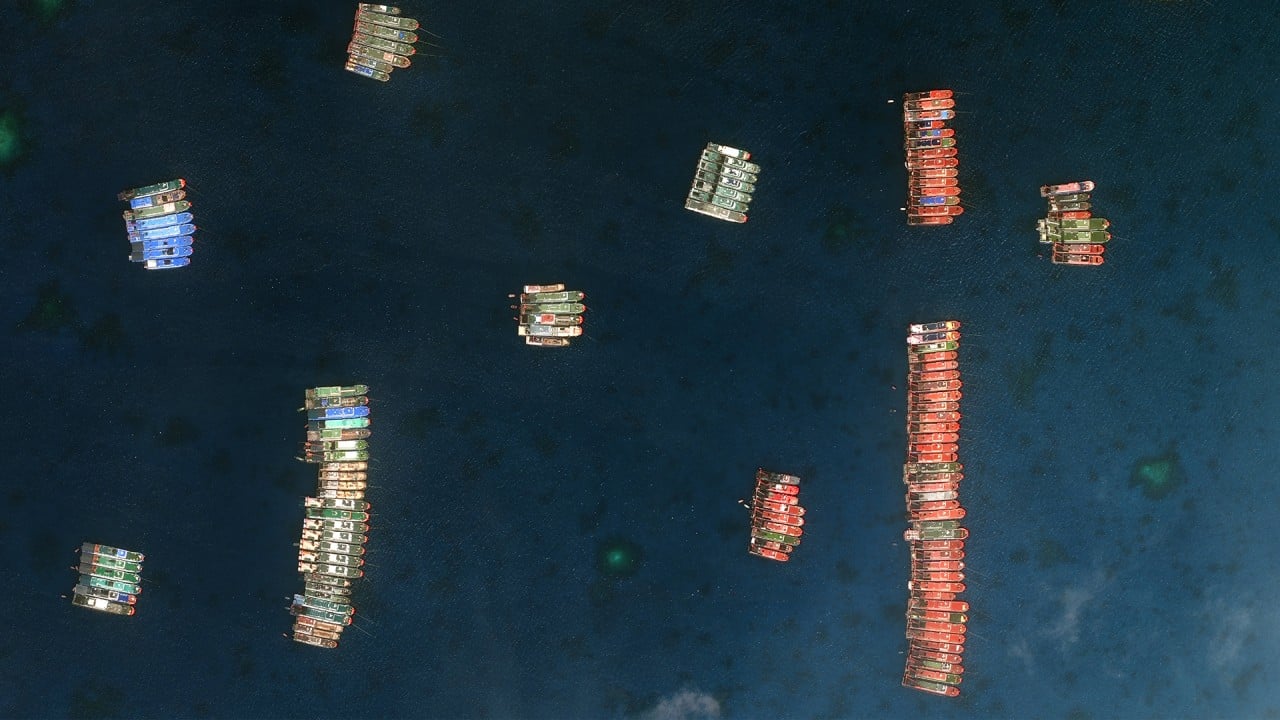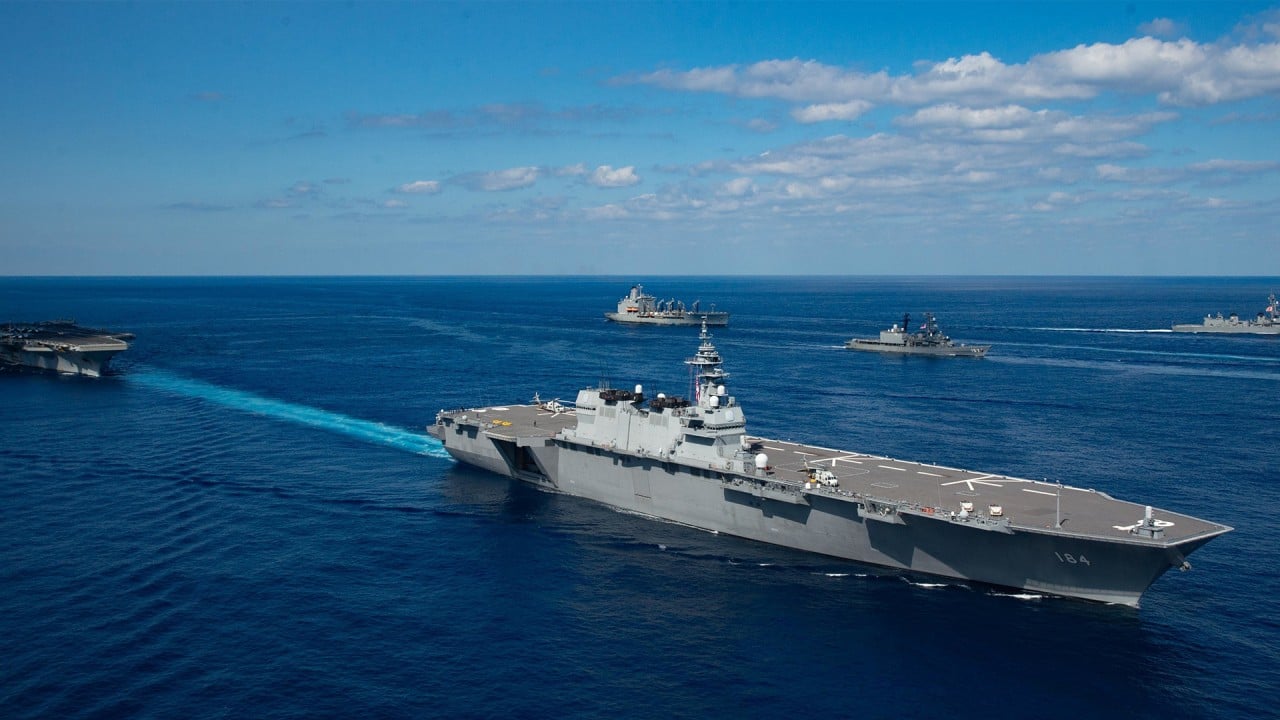
South China Sea: US bolsters presence with amphibious assault ship USS Makin Island
- Ship’s visit highlights Washington’s obligation towards the Philippines, analyst says, with Manila in dispute with China over Whitsun Reef
- The transit follows both China and the US sailing aircraft carriers into the contested waters
Satellite data showed that the USS Makin Island amphibious-ready group (ARG) travelled through the Strait of Malacca into the contentious waters from late on Wednesday until the early hours of Thursday, according to the Beijing-based South China Sea Strategic Situation Probing Initiative (SCSPI). The group included amphibious assault ship the USS Makin Island and the amphibious transport dock USS San Diego, the think tank said.
Sailors on the USS Makin Island were conducting “a live-fire training exercise”, the US Indo-Pacific Command tweeted on Thursday, along with a hashtag calling for a “free and open Indo-Pacific”.
“Since China-US relations are relatively tense, the US is putting more of its military capacity near China,” said Chinese military commentator Song Zhongping. “Its transitioning to the South China Sea and western Pacific areas in particular is a normal situation.”
US destroyer the USS John McCain also passed through the Taiwan Strait on Wednesday, which the Chinese military’s eastern theatre command denounced for sending the “wrong signal” to Taiwan’s government.
South China Sea: the dispute that could start a military conflict
The SCSPI also said that the USS Mustin guided-missile destroyer was operating in the East China Sea on Saturday.
The increased presence of China’s coastguard near islands in the East China Sea that are also claimed by Japan, and Beijing’s increasing “grey zone” warfare tactics against Taiwan, are among the other points of contention.
The deepening dispute with the Philippines over Whitsun Reef in particular has escalated in recent days, with Manila issuing strongly worded statements opposing the presence of what it says is a maritime militia. Beijing has claimed its vessels there are fishing boats sheltering from bad weather, and has reiterated its claims to the reef.
Collin Koh, a research fellow from the S. Rajaratnam School of International Studies in Singapore, said it was not the first time a US amphibious-ready group had sailed through the South China Sea, but that it was significant given current tensions in the waters.
The Makin Island group was building on the USS Theodore Roosevelt’s activities in the South China Sea to “demonstrate the US’ security commitment to the region, not least its obligation towards the Philippine-US alliance”, Koh said.
Song said the maritime boundaries of the US Indo-Pacific Command’s three major fleets – the Third Fleet, Fifth Fleet and Seventh Fleet – had been blurred under Trump to increase their combat effectiveness. The USS Makin Island’s transit from the Indian Ocean, which falls under the Fifth Fleet, into the South China Sea, part of the Seventh Fleet’s domain, was a reflection of this, he said.
“Out of the Indo-Pacific Command, the Third Fleet’s actual combat capabilities are the strongest, so since they need to direct combat forces to the Indo-Pacific, their main goal is to continuously transfer the Third Fleet’s military forces into the Seventh Fleet and Fifth Fleet’s areas,” he said.
“I personally think that the USS Makin Island may travel to its home port in San Diego via the South China Sea and Pacific Ocean, and will need to carry out exercises while it is travelling.”
Military commentator Liang Guoliang said: “The USS Makin Island is going to show off the American navy’s muscle. They are going to tell the Chinese military that even though Beijing built three airstrips in the Spratly Islands that can accommodate all kinds of warplanes, the US navy has the world’s most powerful island-landing capability to deal with them.”
Additional reporting by Kinling Lo




